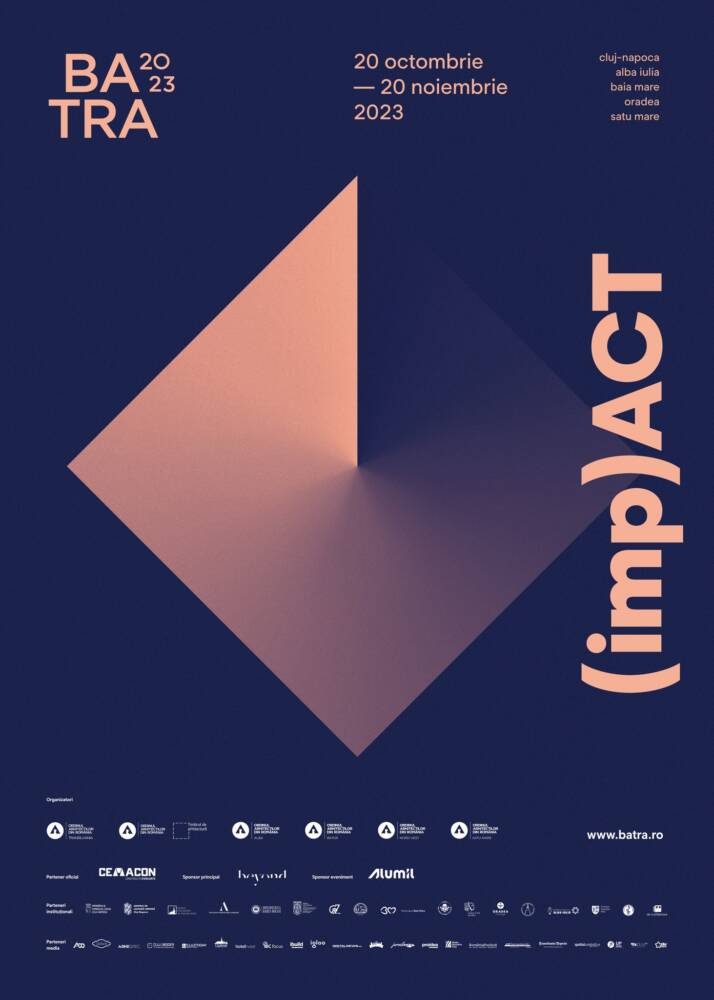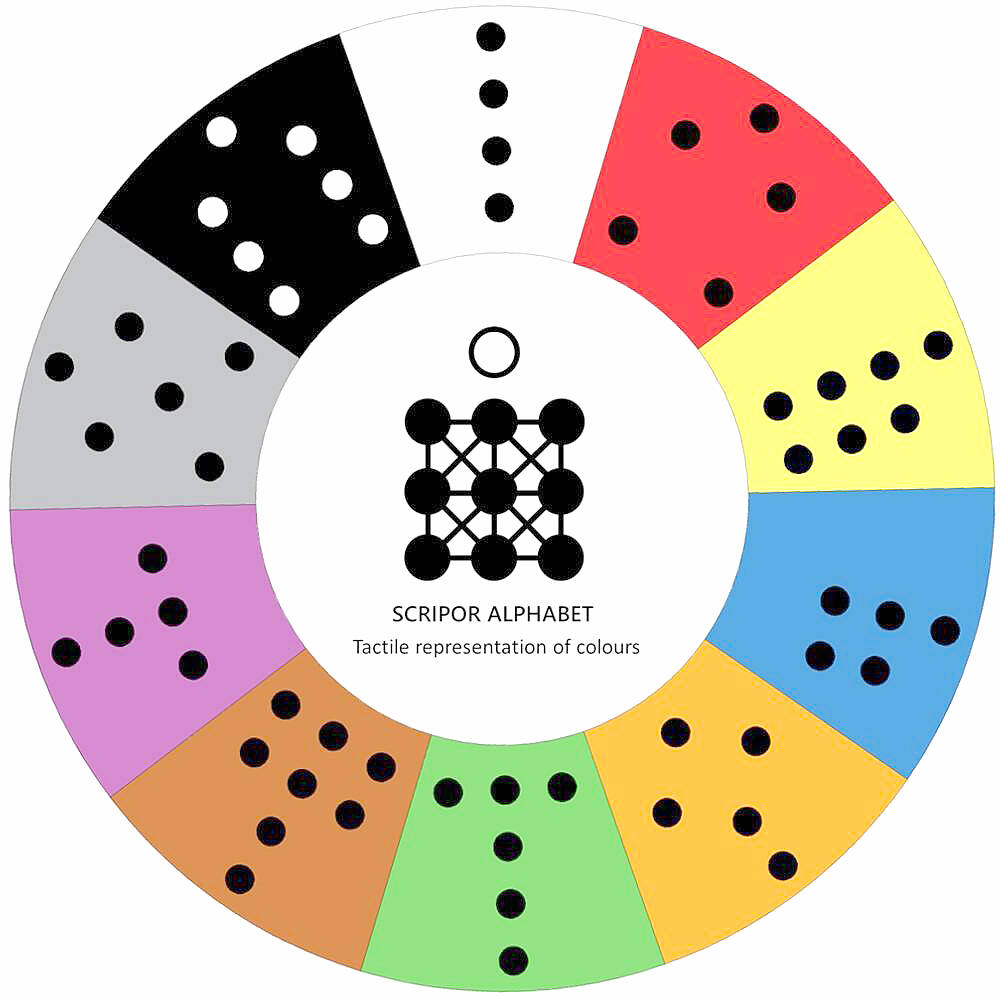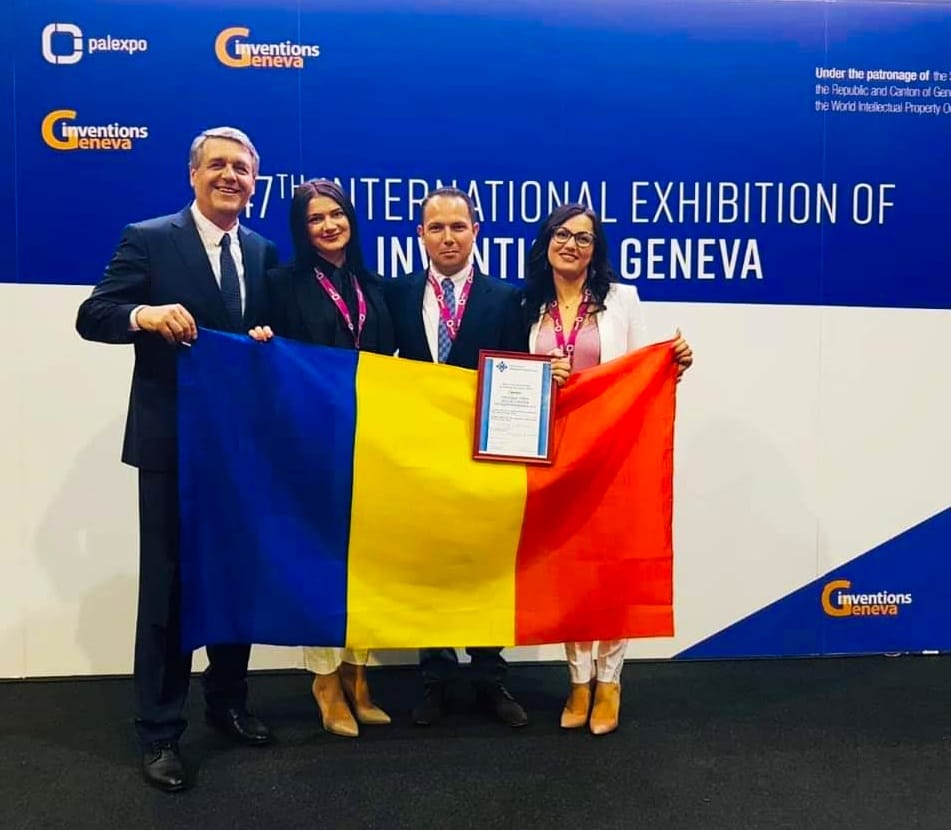imp(ACT) of the Scripor Alphabet in Architecture
As part of the Transylvania Architecture Biennial 2023, several buildings from Transylvania will made accessible using the tactile alphabet of colors.
One of the sections of the Medicover Hospital in Cluj-Napoca, as well as the headquarters of a municipality within the BATRA area, alongside other public spaces, will be made accessible using the Scripor Alphabet during the 2023 edition of the Transylvania Architecture Biennial (BATRA).
The Scripor Alphabet refers to a tactile alphabet of colors based on graphical representations, which allows the visually impaired to perceive colors. It was developed by Tudor Scripor from Cluj and was awarded gold at the International Exhibition of Inventions in Geneva.
In the context of the New European Bauhaus and the European Accessibility Act, two European regulations that invite us to think and create a sustainable, beautiful, and inclusive world, the Transylvania Architecture Biennial is taking the first steps in this direction in line with the theme of this edition: imp(ACT).
Out of the total number of visually impaired individuals, over 80% have lost their sight during their lifetime, which means they have well-defined concepts related to space, color, and shapes. This tactile alphabet of colors, which restores their sense of belonging and its utility in creating ease and intuitive access for visually impaired individuals, is complemented by the universal usefulness of having tactile floor plans in all buildings. The importance of the latter is even greater as they can be used as evacuation plans in emergency situations, in public institutions, usable by absolutely everyone in case of power outages, intense fires with smoke, or other incidents that can partially obstruct vision, as well as to create easier and more intuitive access.
“We are not the first to make buildings accessible, but providing independence in emergency situations, using a tactile language that can be easily learned by anyone, that is a first.” Arch. D. Maier.
For the organizers of BATRA, accessibility means more than what makes a building spatially accessible to as many people as possible.”
“In general, the criteria for accessibility are usually consider met when we have a ramp and an elevator, but we are trying to expand the concept: from access to autonomy in a space for people with various types of disabilities. There are many inventions that aren’t grounded in reality. Due to its simplicity can easily transform into a communication tool. There is Braille, but its efficiency can be complemented with substances, materials, textures; it saves a lot of time in communication,” believes architect Daniela Maier, the curator of Transylvania Architecture Biennial 2023.
“Color is present in every industry and in every aspect of daily life. In the absence of a universal color standardization, visually impaired individuals face daily integration difficulties or even discrimination. Products, services, and jobs become more inclusive due to the existence of this tactile, universal color standardization. This concept significantly improves the quality of life for individuals with visual impairments, provides a sense of belonging, and increases safety and autonomy,” says Tudor Scripor, the creator of the Tactile Alphabet of Colors.
Furthermore, within the framework of the Transylvania Architecture Biennial 2023, three events will take place to educate architects on how to make buildings accessible using the Scripor Alphabet:
- The conference “Accessibility of Standardized Residences,” during which the foundation for tactile maps for apartment residences will be established, with the presence of visually impaired architects from around the world;
- The presentation of the international teaching/learning platform for the Scripor alphabet, in collaboration with the “Zi de Bine” Association, coordinated by Melania Medeleanu;
- An applied workshop where visually impaired individuals and architects will come together to fine-tune and streamline the collaboration mechanism in the new standardization, which involves information about substances, textures, material composition in a construction, whether it’s an institution, an office, or a private home.
The workshop will be the first in a long-lasting series, subsequently coordinated by Sebastian Zabulică, a visually impaired student at the Faculty of Architecture in Cluj-Napoca.”
“We aimed to find those projects, associations, and individuals who can truly materialize the idea of universally accessible spaces. In the 2021 edition, through an architectural competition, we supported the Maltese Aid Service, which will create an inclusive playground. Now, we intend to encourage a young architecture student challenged by an illness that might discourage any pursuit in a visually related profession. Sebastian can transform his experience, develop in a direction he might not have initially realized, but one that is so necessary in an architecture that aims to be anchored in contemporary functional and aesthetic standards. The Scripor Alphabet will greatly assist us in defining, mapping, and promoting spaces,” said architect Daniela Maier, the curator of Transylvania Architecture Biennial 2023.
“As a congenitally blind individual, I’ve had a remarkable experience with tactile maps, as they significantly impact my orientation in unfamiliar spaces. Implementing the Scripor alphabet, including in architecture through these maps, helps me feel more confident and independent in my day-to-day travels, alleviating my fears related to navigating unknown places. The colors, representing each route on the tactile map, facilitate their memorization and navigation in a simple and secure way, providing me with a clear and detailed perspective of the space I’m in. With warmth, I encourage and recommend the use of tactile maps to all visually impaired individuals because we now have the possibility to greatly enhance our mobility and experience a more independent life in the world around us,” adds Marin Medeleanu.
The Scripor Alphabet
The tactile alphabet of colors – known as the Scripor alphabet – was named after its creator, Tudor Scripor. The word “color,” regardless of language, dialect, culture, or geographic area, has been reduced to a symbol, unique, simple, and universal. Color is represented through a combination of dots, positioned in a cell similar to the Braille alphabet. Using the principles of Universal Design, the Scripor alphabet algorithm is based on color theory, internationally recognized by representing the three primary colors: RED, YELLOW, BLUE; the secondary colors: ORANGE, GREEN, PURPLE; the tertiary color BROWN; and the achromatic colors: GRAY, WHITE, and BLACK. This coding system allows visually impaired individuals to efficiently read, write, identify, recognize, and differentiate colors. For this invention, in 2019, at the International Exhibition of Inventions and Innovations in Geneva, his invention was awarded the Gold Medal and the Grand Prize, showcasing its innovative value and impact. In 2022, at the International Education 2.0 Conference in Dubai, Tudor Scripor was honored with the Outstanding Leadership Award, and this year, at the United Nations headquarters in Vienna, the Essl Foundation, organizer of one of the world’s most well-known conferences dedicated to supporting people with disabilities, awarded Tudor Scripor the prestigious Innovation Award. This distinction highlights the significant contribution of his invention in improving the lives of individuals with special needs and its relevance to the social field.
Info BATRA 2023
The sixth edition of the Transylvania Architecture Biennial (BATRA) 2023 is organized by the Romanian Order of Architects – Transylvania Branch, in partnership with the OAR branches in Bihor, Satu Mare, Alba, and Nord-Vest, with the support of the national OAR branch. The event takes place from October 20th to November 20th, in Cluj-Napoca and four other cities in Romania (Oradea, Baia Mare, Satu Mare, and Alba Iulia). The main activities will be held during the week of October 20th to 28th, and the exhibitions will be displayed in all five cities for a month. In Cluj-Napoca, the exhibition can be admired, as usual, in Unirii Square; in Oradea, in the passage of the Vulturul Negru building; in Baia Mare, in Liberty Square; in Alba Iulia, in Citadel Square; and in Satu Mare, on Corneliu Coposu Street, in the Someș area. The purpose of the 2023 edition is reflected in the chosen theme, “(imp)ACT,” representing the organizers’ belief that architecture has the power to change the world. The challenging part is understanding the ways in which this change can be brought about and, more importantly, how this change can be for the better.
The Transylvania Architecture Biennial is an event that is part of a series of activities within the OAR program for financing the branch architecture awards, based on their own regulations and organizational autonomy.
PARTENER: Cemacon
MAIN SPONSOR: Beyond
EVENT SPONSOR: Alumil
INSTITUTIONAL PARTNERS: Cluj-Napoca City Hall and City Council, Baia Mare City Hall and City Council, Satu Mare City Hall and City Council, Oradea City Hall and City Council, Alba Iulia City Hall and City Council, Zalău City Hall and City Council, Sălaj County Council, Bistrița City Hall and City Council, George Coșbuc Bistrița Municipal Cultural Center, Corneliu Baba Bistrița Art High School, Petrus Italus Trust Association, Cluj-Napoca University of Art and Design, Ethnographic Museum of Transylvania, De-a Arhitectura
MEDIA PARTNERS: Add PR, Arhispec, Atelierul, Cluj Insider, Cluj Today, Cluj4ever, Hotel Invest, Igloo, I like Cluj, IBC Focus, ibuild, Instal News, Jurnal MM, Proidea, Radio Cluj, România Pozitivă, Spațiul Construit, Transilvania Reporter, Transylvania Today, Up News, Via Cluj, Zile și Nopți



